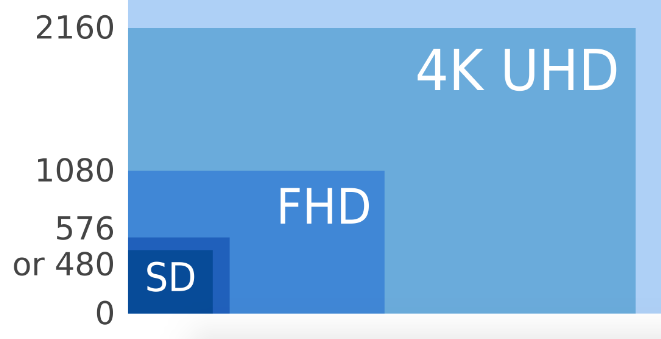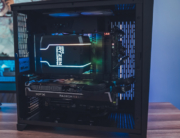Home / Handy Tips /

As technology has advanced, the television market has become more complex. Sure – the picture quality is important. But now, there is so much more to consider.
From the type of screen to the “smart” capabilities, finding the best TV for your home theatre setup can be daunting. To help with your search, we’ve put together this comprehensive, 6-step guide. Let’s get right into it.
Step 1: Screen size
First, you’ll need to take the size and layout of your room into account. Where will your TV go? How far away will your TV be from the couch? Will you be wall-mounting your TV, or will it sit in an entertainment unit or on a console?
Answering these questions – as well as considering your budget – should give you a rough idea of what size screen will best suit your circumstances.
Keep in mind that different screen technologies are best viewed from different distances. Here’s a rough guide:
- Full HD TVs are best viewed at a distance 3 times the screen height.
- 4K Ultra HD TVs are best viewed at a distance 1.5 times the screen height.
In other words, if you’re in a small space, investing in a 4K screen could ensure you get the best possible viewing experience.
Step 2: Screen technology

Screen technology isn’t all about the crispness of the image. Different screen types offer different colour saturation, black points, richness, and brightness – and come at different price points.
Today, there are two main types of screen technology: OLED and LED/LCD. Let’s have a look at these in more detail.
OLED TVs
OLED (organic light-emitting diode) TVs are fairly new, and offer an intense, incredibly realistic image quality.
One of the key differences between OLED and LED TV screens is the backlight. You might have noticed that, when watching a LCD/LED TV, the blacks show up as a deep charcoal grey. This slight colour fading is due to the backlight. OLED TV screens do not have a backlight, and therefore offer deep, rich, true blacks.
Here are some other benefits of opting for an OLED TV:
- Sleek and slim designs. OLED screens can be made very thin.
- Near instant response times. This makes OLED screens ideal for sports-lovers and gamers.
- Wide viewing angles. The image should look great no matter where you sit in the room.
Of course, these benefits come at a cost. OLED TVs are more expensive than LED/LCDs.
LED/LCD TVs
LEDs (light-emitting diode) and LCDs (liquid crystal display) are the most common screen technologies on the market. Both cost less than an OLED TV.
Although OLED TVs have a lot to offer, there is no doubting the impeccable image quality offered by many LED/LCD TVs. Here is a quick overview of some of the superb quality, high-tech LED/LCD screens currently available.
- QLED TVs offer an Ultra HD 4K resolution and high-end Nano-crystal technology that provides a wide colour range and smooth image.
- SUHD TVs utilise quantum dot technology that offers greater colour volumes at a higher brightness than OLED TVs. The being said, SUHD screens cannot produce the pitch-blacks offered by an OLED screen.
- ULED TVs are top-of-the-line, with enhanced colour, breath-taking resolution, and competitive motion technologies.
Step 3: Screen resolution
Now that you have decided on screen technology, the next step is to consider on screen resolution.
The resolution of your screen will determine how sharp or fuzzy the picture will be. Generally, those that watch sports, play games, or really enjoy action movies are best suited to high-resolution TVs. If you’re not particularly fussed with image sharpness, you can certainly get away with a lower-end resolution.
As you begin your search for the perfect TV, you’ll start coming across a number of terms that relate to screen resolution. The most common are Full HD, Ultra HD (or UHD), 4K, and UHD premium. Let’s break these down.

Full HD TVs
Full HD TVs offer a resolution of 1080p (more than 2 million pixels), and are about five times sharper than a standard definition television. Full HD TVs are perfect for watching 1080p YouTube videos, and Blu-ray discs.
Ultra HD 4K TVs
Ultra HD and 4K are pretty much the same thing – a screen that offers a stunning 3840p resolution. UHD 4K screens provide an unbeatable colour range and smooth motion, even from close up.
It is worth noting, however, that most TV channels, YouTube channels, and streaming services don’t offer 4K video. This will most likely change in the near future, but does mean you won’t always be able to take advantage of your UHD screen.
UHD Premium
Many brands offering 4K TVs have adopted the term ‘UHD Premium’. UHD Premium TVs are certified by the UHD Alliance, and fulfil a number of criteria that together make for a premium entertainment experience. These specs include things like a wide colour gamut, a varied brightness, and a high dynamic range.
Step 4: TV technology
There are a number of TV technologies, features, and innovations that are worth considering. Here are some of the most common.
Smart TVs
Smart TVs have in-built internet connectivity, and make it easy and efficient to watch YouTube, Netflix, ABC iView, and other online streaming services right from your TV. You can also connect or mirror your smartphone, tablet, or computer to the TV screen, which is a great feature for displaying family photos and home video.
You will, of course, require wireless internet to use a smart TV. If you find that your home network setup isn’t up to the task, get in contact with us today using the form on this page, and we’ll get right back to you.
Super thin and curved screens

Super thin TV screens may come with a high price tag, but do offer a sleek, minimalist design.
Curved screens also add a contemporary look to your home, but can limit viewing angles. We suggest checking out a curved screen in person before making your choice.
Sound quality
Are you looking for a great in-built sound, or are you willing to fork out extra for the ultimate at-home movie experience? Most TVs offer good sound quality, with some even utilising the screen itself as a speaker.
Additional features
Here are a few more things to consider:
- Streamlined cables – this means all peripheral cables are streamlined into one
- Recording capabilities
- Hands-free voice control
- Content suggestions
Step 5: Ports, inputs, and connections
To get the most out of your TV, you will need to make sure it has all of the important ports, inputs, and connections.
First, think about the peripheral devices you plan to connect to you TV, such as:
- A DVD or Blu-ray player
- Gaming consoles
- USBs
- Home theatre systems
- Sound bars
- An Apple TV or Foxtel Box
Then, check for TV models that can accommodate all the peripherals you would like to plug in.
Step 6: Installation and setup
Depending on the size and style of your new TV, the installation process may require a few pairs of helping hands. TVs larger than 50 inches can be tricky to move on your own, so be careful.
If you are mounting your new TV on a wall, ensure your purchase the correct brackets, and follow the manufacturer’s instructions to a tee. You want your TV to be safe and secure.
Once your TV is installed, you can begin setting up any peripheral accessories, such as surround sound.
Finally, you can configure free-to-air channels, connect your TV to your Wi-Fi network, and download your favourite streaming apps.
Now, it’s time to sit back, relax, and enjoy the show!
Want help with your new TV
From finding the perfect TV for your home and budget, to installing your favourite streaming services and formulating an at-home cinema, the team at Computer Cures can help you get the most out of your new TV. We can also help with your wifi setup and aid you in getting your computer setup to talk to your new TV. Give our team of experts a call on 1300 553 166 or fill out the form on this page, and we’ll get right back to you.








Leave A Comment